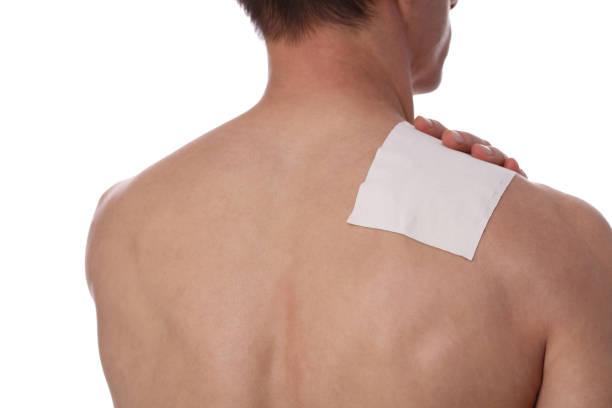Everything You Need to Know About Pain Patches

Fentanyl patches are used to treat chronic pain. They work by gradually releasing fentanyl into your body through your skin.

Common pain patch types include Flector (diclofenac epolamine), Lidoderm (lidocaine), and Duragesic (fentanyl). These can be applied to areas of clean, dry, flat skin.
How They Work
A patch delivers non-addictive pain medicine by releasing it through the skin. These patches may contain an anti-inflammatory such as ibuprofen (Advil, Motrin) or a narcotic such as morphine.
A team of researchers from the University of Virginia is working to develop an innovative solution for treating back pain. They’ve developed a patch that would release controlled flows of medication through a thin layer of sensors and circuits below the skin.
They believe that the result would be a more effective and less painful form of pain relief than current lidocaine patches.
The patches are also designed to work on thin skin, which is especially important for patients with fragile or delicate skin.
Apply the drug-delivering patch to a clean, dry, flat area of your body where you can easily reach it. Choose a place with smooth, unbroken skin, such as the chest, arm, or back. Avoid hairy areas if possible, as this could irritate the skin.
Dosage
Pain patches are used for short-term relief of chronic severe pain that does not respond to non-narcotic analgesics. They should be used in conjunction with other narcotic medications or non-opioid analgesics (such as acetaminophen, aspirin, or ibuprofen) until pain control is achieved.
Apply a patch to the skin as directed by your doctor. Select a dry, non-hairy area of the body, such as your chest or arms, and press it in place firmly for 30 seconds.
Do not apply the patch to any burns, cuts, irritated skin, or skin that has been exposed to radiation (x-ray treatment). If you are using more than one patch, make sure the edges of each patch do not overlap or touch each other.
In addition, set dosing limits and monitor the use of fentanyl patches closely. For example, computerized prescriber order entry systems or inpatient pharmacy computer systems should flash an alert if more than 25 mcg/hour is prescribed as a first-time dose or if more than one fentanyl patch has been used at any time.
Side Effects
There are many types of pain patches, each with its own side effects. The most common are fentanyl patches and lidocaine patches (Lidoderm).
These patches are placed on your skin to help relieve pain. They are available in both prescription and over-the-counter (OTC) versions.
Depending on the brand, these patches can contain buprenorphine or fentanyl. Both are opioid medications that are slowly released into your bloodstream.
Be sure to follow all directions for using a pain patch and tell your doctor if you have any questions or concerns.
You should change your patch every 72 hours or more often, as recommended by your doctor. You should keep the area where your patch is stuck away from sources of heat such as a hot water bottle or heating blanket, or exposure to sunlight.
Fentanyl patches are not suitable for use by people who are using other opioids, such as morphine or heroin, as they may increase the risk of severe adverse reactions, continue to read here.
Overdose
Fentanyl patches can release too much medication in a single dose. This can cause serious or life-threatening symptoms. You may become very sleepy, dizzy, weak or unable to breathe. If this happens, call for emergency medical help right away.
Your doctor will adjust your dose slowly to lower the risk of this happening. You should not take more than your prescribed dose unless your doctor tells you to.
If you think you have taken too much, get help right away. Your doctor can give you a rescue medicine called naloxone to reverse the effects of a fentanyl overdose.
Summary:
The risk of an accidental overdose can be reduced by promptly disposing of used patches by folding them in half with the sticky sides together and flushing them down a toilet. Never put discarded or improperly stored patches in household trash and dispose of them in a safe place where children or pets can’t access them.
